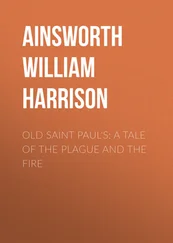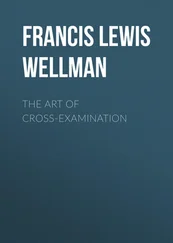William Andrews - Old Church Lore
Здесь есть возможность читать онлайн «William Andrews - Old Church Lore» — ознакомительный отрывок электронной книги совершенно бесплатно, а после прочтения отрывка купить полную версию. В некоторых случаях можно слушать аудио, скачать через торрент в формате fb2 и присутствует краткое содержание. Жанр: foreign_antique, foreign_prose, на английском языке. Описание произведения, (предисловие) а так же отзывы посетителей доступны на портале библиотеки ЛибКат.
- Название:Old Church Lore
- Автор:
- Жанр:
- Год:неизвестен
- ISBN:нет данных
- Рейтинг книги:3 / 5. Голосов: 1
-
Избранное:Добавить в избранное
- Отзывы:
-
Ваша оценка:
- 60
- 1
- 2
- 3
- 4
- 5
Old Church Lore: краткое содержание, описание и аннотация
Предлагаем к чтению аннотацию, описание, краткое содержание или предисловие (зависит от того, что написал сам автор книги «Old Church Lore»). Если вы не нашли необходимую информацию о книге — напишите в комментариях, мы постараемся отыскать её.
Old Church Lore — читать онлайн ознакомительный отрывок
Ниже представлен текст книги, разбитый по страницам. Система сохранения места последней прочитанной страницы, позволяет с удобством читать онлайн бесплатно книгу «Old Church Lore», без необходимости каждый раз заново искать на чём Вы остановились. Поставьте закладку, и сможете в любой момент перейти на страницу, на которой закончили чтение.
Интервал:
Закладка:
In the case of debtors, sanctuaries in a modified form existed down to the reign of William III., when, in the year 1697, an Act of Parliament abolished them.
English history furnishes many instances of sanctuary laws being disregarded. A familiar example is that of four Lancastrian knights flying from the battlefield of Tewkesbury, in 1471, and taking refuge in a church not far distant from the place. Edward, sword in hand, was about to follow them, and violate the sanctuary, but the priest who was celebrating mass refused to permit him to enter, until he agreed to pardon the knights. He made the promise, whereupon the refugees left the church. Subsequently they were made prisoners and executed.
The first time the sanctuary of Westminster Abbey was violated was in the year 1378. It was not only violated, but murder was committed. The particulars of the case are as follow. In one of the campaigns of the Black Prince, two esquires, named Frank de Hawle and John Shakle, made captive a French or Spanish Count. The prisoner had a friend in John of Gaunt, and he directed the captors to give up their prize, but they refused. John of Gaunt, without delay, imprisoned in the Tower the two men who had disobeyed his injunctions. They made their escape, and fled to Westminster Abbey, but were closely pursued by Sir Allan Boxhull, Constable of the Tower, Sir Ralph de Ferrers, and a band of fifty men in arms. It is believed that the two esquires made their way into the choir of the Abbey, and at a time when high mass was being celebrated. “The Deacon,” says Dean Stanley, “had just reached the words of the Gospel of the day, ‘If the goodman of the house had known what time the thief would appear – ,’ when the clash of arms was heard, and the pursuers, regardless of time or place, burst upon the service. Shakle escaped, but Hawle was intercepted. Twice he fled round the choir, with his enemies hacking at him as he ran; and, pierced with twelve wounds, he sank dead in front of the Prior’s Stall – that is, at the north side of the entrance of the choir.” It is also recorded that his servant and a monk fell at the same time. Hawle was looked upon as a martyr to the injured rights of the Abbey. His remains were laid to rest within its walls, a most unusual honour at that period. The spot where he fell was marked with an inscription engraved on a stone, and over his grave was a brass effigy and a long epitaph, which remained till within the last century. The desecrated Abbey was closed for four months, and the Members of Parliament suspended their sittings within its precincts for fear of pollution. The two chief assailants were excommunicated.
In 1232, the sanctuary of the church at Brentwood, Essex, was violated by orders of the boy king, Henry III. He had allowed himself to be persuaded that the brave Hubert de Burgh had sold his country for French gold, and armed men were sent to make the stout knight prisoner. Hubert took refuge in Brentwood Church. His enemies broke in, dragged him from the very altar, and a smith was ordered to shackle him. “I will die any death,” said the smith, “before I put iron on the man who freed England from the stranger, and saved Dover from France!” so Hubert’s feet were tied below his horse, and he was carried to the King. A remonstrance from the Bishop of London caused the refugee to be replaced in the sanctuary, but his foes were still determined to have him. The Sheriff put stakes round the churchyard watched day and night, until hunger compelled a surrender, when Hubert was thrown into prison, and there died.
Elizabeth Woodville, Queen of Edward IV., twice found shelter in the sanctuary of Westminster. Here was born, on April 9th, 1470, Edward V. Skelton, our earliest Poet-Laureate, remained in this stronghold, in safety, writing furious invectives against Cardinal Wolsey. If he had not had the protection of sanctuary, it is believed he would have been doomed to destruction. “It was impregnable,” says Dean Stanley, “even by all the power of the Cardinal at the height of his grandeur.”
A curious example of the violation of a sanctuary occurred at Stafford. In the year 1300, a complaint was laid before the King by the Dean and Chapter of St. Mary’s, Stafford, to the effect that two men imprisoned for felony in Stafford gaol had escaped, and taken refuge in the church. The men were followed into the church, captured, and re-imprisoned. The prison authorities were directed to restore the men to the Dean and Chapter.
It may not be without interest to give some details of two important north country sanctuaries, Durham and Beverley. On the north door of the Cathedral of Durham is a ponderous bronze knocker, of which we give a drawing. It will be noticed that the knocker is in the form of a ring held between the teeth of a monster’s head. The person claiming sanctuary raised the ring of the knocker, and sounded it to obtain admission to the church, where, for a time, he felt safe out of the reach of his avengers. In the sacred building two men were on duty night and day, ever ready to quickly open the door. A bell was next tolled to make known the fact that a man had taken sanctuary. When a refugee sought protection an early intimation was made to the prior, who gave injunctions that he was to keep within the limits of the churchyard, which formed the bounds of the Durham sanctuary. In presence of a witness, a detailed account had to be given of the crime committed, dates, names of persons, places, etc., had to be given, and they were carefully noted. In cases of murder and manslaughter, the weapon employed had to be mentioned. A gown of black cloth, having on its left shoulder a cross, known as “the cross of St. Cuthbert,” was given him to wear. The badge was, we are told, “to the intent that every one might see that there was such a freelige granted by God unto St. Cuthbert’s shrine, for every such offender to flee for succour and safeguard of their lives.” The refugee at Durham was allowed the right of sanctuary for thirty-seven days, and provided with food and drink and bedding at the expense of the convent. If within that time he failed to make peace with his adversaries, he had to abjure the realm. He lost his property by this proceeding, but saved his life, or evaded some barbarous form of punishment which often resulted in mutilation of a most painful character.
The Surtees Society, on the 7th December, 1836, resolved to print the Records of the Sanctuaries of Durham and Beverley, and shortly afterwards the work was issued. The Durham notices are reproduced from the ordinary Registers of the Cathedral, and extends from 1464 to 1524. The following shows the number of crimes, and the calling of the men taking refuge: —
Murder and Homicide. – Crimes, 195. Persons implicated, 283. Trades of fugitives: – Husbandmen, 8; Labourers, 4; Yeomen, 4; Gentlemen, 4; Ecclesiastics, 3; Merchants, 2; Tailor, 1; Plumber, 1; Carpenter, 1; Tanner, 1; Baxster, 1; Glover, 1; Sailor, 1; Apprentice, 1; Under-Bailiff, 1; Servant, 1; Knight, 1 (an accessory). The occupations of the remainder are not mentioned. Debt, 16. Of these – Shermane, 1; Horslibber, 1; Merchant, 1; Flesher, 1. Horse-stealing, 4. Of these – Yeoman, 1. Cattle-stealing, 9. Escaping from Prison, 4. Of these – Shoemaker, 1. Housebreaking, 4. Rape, 1. Theft, 7. Of these – Yeoman, 1; Ecclesiastic, 1; Goldsmith, 1. Backward in his accounts, 1. For harbouring a thief, 1. For failing to prosecute, 1.
The list of weapons, etc., employed by the murderers is as under: —
Indefinite, 12; Armicudium, 1; Arrow, 5; Baselard 3; Bastard-sword, 1; Bill, 3; Carlisle Axe, 3; Club-staff, 11; Crabtree-staff, 1; Dagger, 56; Dicker, 1; Egelome, 1; Forest-bill, 1; Halbarde, 2; Hanging, 1; Hynger, 3; Iron-fork Shaft, 1; Kendal-club, 2; Lance, 10; Lance-staff, 4; Lang Pike-staff, 1; Long Plane-staff, 1; Pike-staff, 12; Plane-staff, 1; Pychyng-staff, 1; Pugio (a dagger), 1; Scotch Axe, 2; Small-staff, 1; Spear-staff, 2; Staff, 14; Staff, with a pummel, 1; Stone, 2; Sword, 21; Trodden to death, 1; Turf-spade, 1; Welsh-bill, 6; Whynyard (a short dagger), 6; Wood-axe, 3; Wood-knife, 1.
Читать дальшеИнтервал:
Закладка:
Похожие книги на «Old Church Lore»
Представляем Вашему вниманию похожие книги на «Old Church Lore» списком для выбора. Мы отобрали схожую по названию и смыслу литературу в надежде предоставить читателям больше вариантов отыскать новые, интересные, ещё непрочитанные произведения.
Обсуждение, отзывы о книге «Old Church Lore» и просто собственные мнения читателей. Оставьте ваши комментарии, напишите, что Вы думаете о произведении, его смысле или главных героях. Укажите что конкретно понравилось, а что нет, и почему Вы так считаете.












